K-class
Design, Construction, and Naming Notes
Although considered successful boats, the vastly changed naval environment and the emphasis on fleet submarines after WWI made these coastal patrol boats quickly obsolete. They were all decommissioned and discarded in the early 1920's, after only about nine years of service.
K-1 (Submarine No. 32, later SS-32)
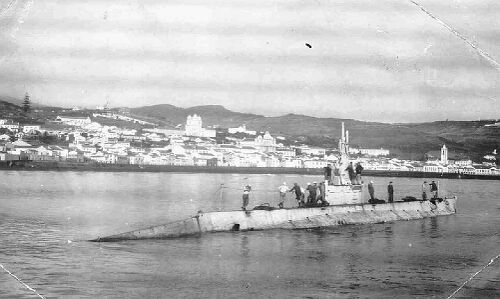
K-2 (Submarine No. 33, later SS-33)
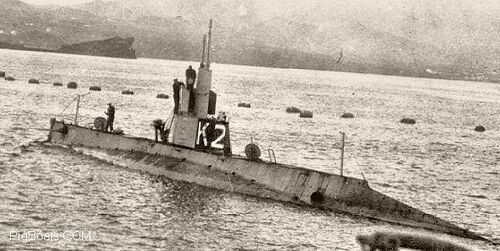
K-3 (Submarine No. 34, later SS-34)
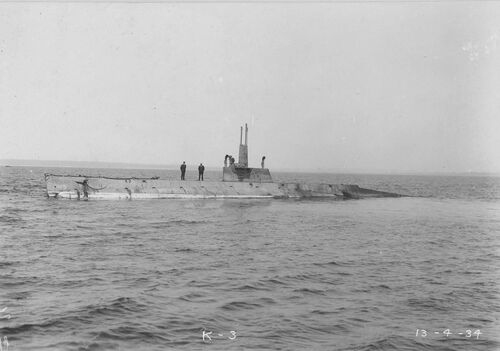
Note the vertical number "24" on the side of the periscope shears. This is not her hull number. It was an identifier used to determine the boat's place in a steaming formation at sea, i.e. she was the fourth boat of division 2.
Her periscopes are fixed in height and do not retract. The eyepiece down in the control room does not move either. It is fixed in place and the operator cranks a handwheel to rotate the head on top with the lens.
K-4 (Submarine No. 35, later SS-35)
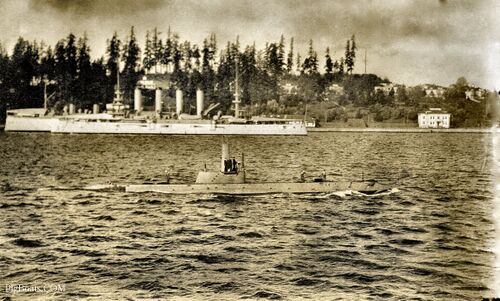
There are two ships in the background, with one partially obscuring the other. They are the receiving ship USS Philadelphia (rear) and the Charleston (Cruiser No. 22). The Philadelphia was serving as a prison ship and had wooden structures built on her decks to accommodate extra berthing for personnel and offices for administrative purposes.
If you look at the Charleston's funnels and number from left to right, between the 3rd and 4th funnel you can see the flag staff with flag flying from the stern of the Philadelphia.
Charleston had been placed in commission in reserve September 14, 1912, she joined the Pacific Reserve Fleet, remaining at Puget Sound (Bremerton) Navy Yard as a receiving ship through early 1916, aside from a voyage to San Francisco in October 1913 as flagship for the Commander-in-Chief, Pacific Reserve Fleet. From 1912 through early 1916, she was receiving ship at the yard.
K-5 (Submarine No. 36, later SS-36)
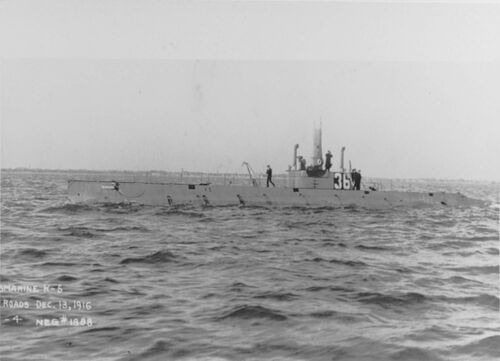
K-6 (Submarine No. 37, later SS-37)
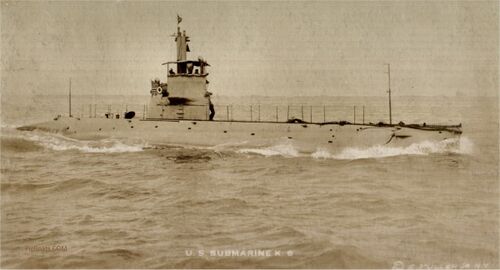
K-7 (Submarine No. 38, later SS-38)
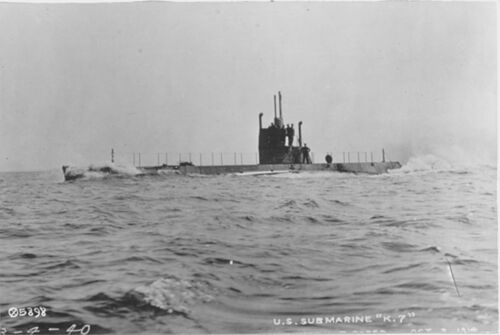
K-8 (Submarine No. 39, later SS-39)
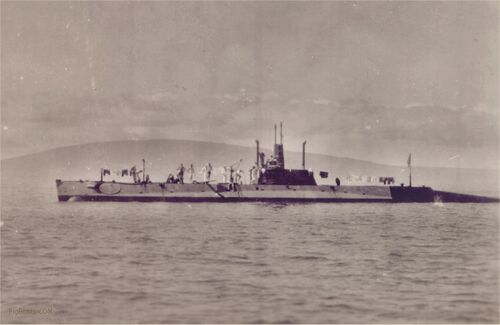
In the background is the island of Maui. The submarine division numbers are on the side of the periscope shears and they are a "3" over a "4" making the K-8 part of Submarine Division 3 and in the 4th position within the division.
Thanks to Tracy White for the location identification.
General K-class & group photos
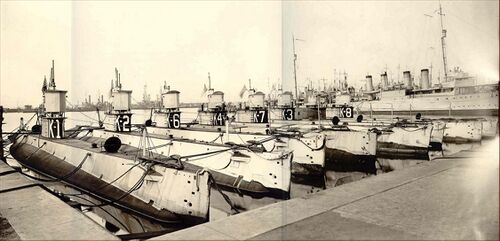
See more General K-class & group photos
Page created by:
Ric Hedman & David Johnston
1999 - 2023 - PigBoats.COM©
Mountlake Terrace, WA, Norfolk, VA
webmaster at pigboats dot com
